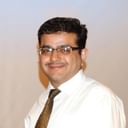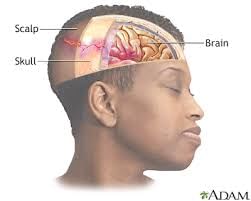Physiotherapy Treatment for Head Injury
PHYSIOTHERAPY TREATMENT OF HEAD INJURY
The treatment may comprise of the following measures:
IMPROVES ALERTNESS OR AROUSAL THROUGH SENSORY STIMULATION:
The patient who is drowsy or confused need to be stimulated by makes them more alert and awake. The therapist should encourage the patient’s cooperation during the treatment. The main aim is to stimulate the reticular activating system by making the patient sit or even stand in the tilt table.
The therapist should provide tactile, visual, auditory and Proprioceptive stimulation to the patient that will send facilitatory signals to the brain and will enable the alert response to be provoked. Auditory stimulation can be given by speaking to the patient during the course of treatment. Visual stimulation is given by showing familiar faces, objects or movement in the visual field of the patient.
Proprioceptive stimulation by giving traction and approximation at joint structures is very helpful in stimulating the arousal response in the patient.
PREVENTION OF SPASTICITY:
As hyper tonicity generally sets in almost all head injury cases various measures need to be taken to keep them under control. Gentle passive movement, gradual rhythmic sustained stretch, prolonged icing for 20 minutes over the muscles, biofeedback, proper positioning are certain measures that needs to be employed for controlling spasticity.
MAXIMISE THE PATIENT’S FUNCTIONAL CAPACITY:
The main aim of this management is to improve the ROM, improve the control of voluntary movement, strengthening paretic muscles, improve the coordination, balance and teach various safety measures.
The treatment should be wide spread over the periods of time as the patient’s attention span and endurance is very less.
NEUROMUSCULAR TRAINING can be given through the development sequence by inhibiting abnormal movement pattern and by facilitating normal movement pattern.
The patient may give activities like bridging, prone on elbow, on all fours, side lying to sitting, sitting, kneeling, half kneeling, standing and walking.
PROPER DOCUMENTATION is necessary of the entire event through- out the day. Infact the routine of the patient should be maintained in the register and the patient need to be reminded of various activities especially if the patient has memory problems. The patient may be given register with photo and names of various health professional visiting him so that each day’s program can be entered. This will benefit both the patient and his acquaintance to know regarding the activities given to the patient.
USE OF VESTIBULAR BALL while training the patient for crawling, bridging, sitting, balance helps in building the Proprioceptive stimulation and teaches proper control to the patient.
Each task has various subtasks which need to be mastered by the patient so that he learns the actual activity using normal movement combination and performs it with precision. Like for training the patient to get up from bed, he may be taught to do asymmetrical push up with the trunk in partial rotation, then lower leg patterns are incorporated and finally the whole task of get up from sidelying is practiced.
REPETITION ACTIVITIES is key like any other neurological disorders. Ambulation training should always be done in upright position training the patient in each and every phase of the gait cycle. If the patient’s balance is poor then assistance may be used.
FUNCTIONAL ELECTRICAL STIMULATION has been shown more effective than kinetic joint training in certain types of cases. The upper extremity also appeared to use specific synergies for hand use in different positions. Clients often can opens hand in out stretched arm position but will be unable to perform the same action when the elbow is flexed. Some patient with minimal functional deficit in th upeer limb may be given some assistive devices or support for the hand so that they can perform some basic activity like eating, combing, writing, etc. this technique helps the shoulder and other proximal structures to produce appropriate movement sequences for hand use but does not facilitate hand function. The treatment however does provide whole task practice even though some basic component of the function is substituted by other means.
REVERSING TASKS in some patients helps in developing increased control by modifying a task or synergy as well as making the muscle work both eccentrically and concentrically. For instance lowering a glass of water on the table may help the patient in getting th glass close to the mouth by improving motor control of biceps during eccentric contraction.



+1.svg)
